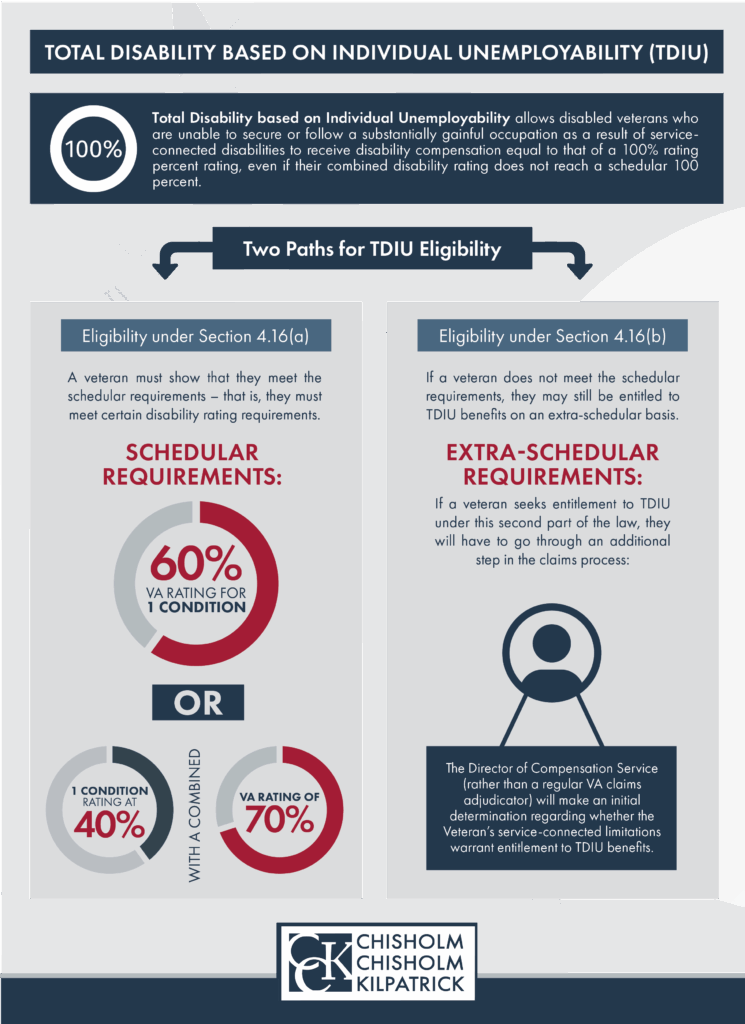How to Prove 60% and 100% Heart VA Disability Ratings

CCK Law: Our Vital Role in Veterans Law
Heart conditions are one of the leading causes of mortality in the US, responsible for hundreds of thousands of deaths every year. These conditions are often dangerous and life-threatening, and for veterans suffering from them, it is essential to earn a disability rating that reflects the severity of the symptoms they face.
If you are a veteran with a serious heart condition caused by military service, you may be eligible to earn a 60 or even 100 percent disability rating from VA. This article will help guide you through the disability claims process so you can prove the severity of your condition to VA and earn the compensation you deserve.
Key points of this article include:
- One of the most common ways VA measures the seriousness of a heart condition is through METs, or metabolic equivalent tests. The lower a veteran scores on their MET, the more severe their heart condition is.
- Some of the best pieces of evidence a veteran can submit to prove their disability claim include military service records, medical records, lay statements, and nexus opinions from doctors.
- While it is not possible to earn a VA disability rating for heart stents, conditions that require the surgical insertion of stents—like aneurysms—are often compensable by VA.

How VA Rates Heart Conditions
The majority of heart conditions are rated based on a set rating system under 38 CFR § 4.104, Schedule of Ratings – Cardiovascular System. The ratings below are assigned if veterans meet one or more of the criteria listed for each percentage:
- 100 percent – continuous congestive heart failure; the condition scores 3 METs or less on an MET test and causes shortness of breath, fatigue, chest pain, dizziness, or fainting; or left ventricular dysfunction with an ejection fraction of less than 30 percent
- 60 percent – two or more episodes of congestive heart failure in the past year; the condition scores 4 or 5 METs and causes shortness of breath, fatigue, chest pain, dizziness, or fainting; left ventricular dysfunction with an ejection fraction between 30 and 50 percent
- 30 percent – the condition scores 6 or 7 METs on an MET test and causes shortness of breath, fatigue, chest pain, dizziness, or fainting; or evidence (X-ray, electrocardiogram, or echocardiogram) of hypertrophy or dilation
- 10 percent – the condition scores 8, 9, or 10 METs and causes shortness of breath, fatigue, chest pain, dizziness, or fainting; or continuous medication is required
Veterans can submit medical records, lay statements, and doctor’s opinions in order to demonstrate that their heart conditions meet a certain level of disability. Importantly, if veterans do not agree with the disability rating that VA assigns, they also have the right to appeal for an increased rating.
What Are METs?
“METs” stands for “metabolic equivalent tests,” a kind of medical exam used to measure the severity of cardiovascular conditions. Rachel Foster, an Accredited Claims Agent with CCK Law, explains what these tests entail:
“METs—also known as ‘exercise testing’—measure the energy cost on your heart during various physical activities. They also measure when an individual starts to experience symptoms during physical activity, and how strenuous the activity was during the onset.”
For example, a simple metabolic equivalent test a doctor might conduct would be to ask their patient to walk around the room while the doctor measures signals from their heart and body. If the patient starts feeling out of breath while doing this, the doctor will likely determine that their heart condition is more severe, since it clearly cannot keep up with the patient’s level of activity. More strenuous MET tests might have the patient run on a treadmill or perform some other intense physical activity.
The higher a veteran’s MET score, the less serious their heart condition is. Veterans with very low MET scores, on the other hand, have more severe heart issues that may bar them from most kinds of physical activity.
Earning a Heart Condition VA Rating Requires Service Connection
Service connection is when a veteran can prove that their heart condition is somehow a result of their military service. This is a critical step in the disability claims process, as veterans often have to prove service connection to earn a VA disability rating for their condition.
Service connection for heart conditions can be established in several ways.
Direct Service Connection for Heart Conditions
Direct service connection is arguably the most common way for veterans to pursue VA disability compensation. This is when a veteran can prove that their condition was either caused or worsened by their military service.
To establish direct service connection, veterans need the following evidence:
- A current diagnosis of a heart condition;
- An in-service event, injury, or illness; and
- A medical nexus linking the current, diagnosed heart condition to the in-service event.
While medical records and a medical opinion can help prove the first and third of these requirements, military service records like incident reports are often the best way of proving an in-service event or illness that led to a serious heart condition.
Secondary Service Connection for Heart Conditions
Another way veterans can establish service connection for serious heart conditions is on an indirect basis. This is called secondary service connection, and applies when a veteran can prove that their heart condition has been caused or aggravated by a separate, already service-connected condition.
For example:
- Say a veteran develops hypertension after exposure to combat during their military service. After being diagnosed, they pursue service connection for their condition, and eventually earn a hypertension VA rating and compensation.
- Years later, the veteran develops coronary artery disease (CAD), with their cardiologist offering a medical opinion that it was the veteran’s hypertension that contributed significantly to the development of the disease.
- In this case, since the veteran’s already service-connected hypertension was the root cause of their newfound CAD, the veteran may be able to pursue a CAD disability rating on a secondary basis. They would do this by arguing that their CAD is really just an extension of their hypertension diagnosis.
Presumptive Service Connection for Heart Conditions
In some cases, VA recognizes certain conditions as automatically connected to a veteran’s military service. When this applies, the veteran does not need to provide additional proof that their condition is related to service.
This presumptive service connection is limited to veterans who served during specific periods or in locations where they may have been exposed to harmful toxins or illnesses.
For example, scientific studies have linked Agent Orange exposure to ischemic heart disease and other cardiovascular problems. Because of this, VA includes ischemic heart disease on the list of conditions that qualify for presumptive service connection. Veterans who were exposed to Agent Orange in Vietnam or elsewhere and who later develop ischemic heart disease may therefore qualify for service connection on a presumptive basis.
60 Percent VA Ratings for Heart Disease: Requirements and Benefits

VA generally assigns a 60 percent disability rating of the heart for three main reasons. To earn a 60 percent rating, veterans must be able to prove one of the following:
- Two or more annual episodes of congestive heart failure – “Episodic” congestive heart failure is when there is a sudden onset of heart failure symptoms that sometimes requires hospitalization to treat.
- A METs score of 4 or 5 with symptoms present – This METS score may apply when a veteran experiences debilitating symptoms during low levels of exercise, including walking or light yard work (e.g. weeding, mowing with a power mower).
- A ventricular ejection fraction between 30-50 percent – Ventricular ejection fraction (EF) measures how well the heart pumps blood. An EF of 55-70 percent is generally considered normal, while an EF of 30-50 percent may indicate heart failure or some other issue.
To prove that they meet the first criterion, veterans should likely submit any medical records from the past few years indicating how frequently they were hospitalized for episodic heart failure.
As for the second and third criteria, these are likely to be proven through a Compensation & Pension (C&P) exam, which VA typically conducts on veterans as part of the claims process. During this exam, a doctor will test the veteran using METs and may also measure their ventricular ejection fraction by ordering an echocardiogram.
What Benefits Are Available for 60 Percent Disability Ratings?
In addition to monthly compensation, veterans with a 60 percent disability rating may also gain access to several prominent benefits, including:
- Veterans Benefits Banking Program
- VA’s Home Loans Program
- CHAMPVA Medical Insurance
- Dependents Educational Assistance
- And more
100 Percent VA Ratings for Heart Disease: Requirements and Benefits
To obtain the highest disability rating for heart conditions, veterans must establish that their symptoms have become extreme enough to greatly affect their everyday lives. In particular, a veteran must prove one of the following:
- Continuous congestive heart failure – In contrast to “episodic” heart failure, continuous congestive heart failure is a chronic condition where the heart has an ongoing inability to pump enough blood to the rest of the body. Typically, this condition is progressive, steadily worsening over time.
- A METs score of 3 or less with symptoms present – This METs score may apply should a veteran experience the symptoms of their heart condition at extremely minimal levels of exercise, including walking slowly for one or two blocks, showering, dressing, or eating.
- A ventricular ejection fraction of less than 30 percent – An EF score of 30 percent or less likely indicates heart failure, since the heart is not pumping nearly the amount it should be for a healthy body.
To prove that they meet the criteria for continuous congestive heart failure, veterans should send VA medical records from the cardiologist that diagnosed them with the condition. As for the second and third criteria above, a C&P exam ordered by VA should serve to prove the veteran’s METs or EF scores. Emma Peterson, a Partner at CCK Law, describes what this C&P exam may look like for 100 percent heart disability ratings:
“Sometimes, due to the severity of your heart condition, doing an actual METs testing is not going to be indicated. Instead, they may do interview-based METs testing, where they will ask you ‘What happens after you walk a block? What happens after you do X, Y, and Z?’ It is important to be very clear about when you start feeling these symptoms because they are going to be estimating. For the 80-100 percent ranges, it’s just not safe to make you start running on a treadmill.”
What Benefits Are Available for 100 Percent Disability Ratings?
A 100 percent (or “total”) disability rating comes with many prominent benefits in addition to the maximum amount of monthly compensation. Some of these benefits include:
- Priority Group 1 Health Care
- No-Cost Dental Care
- CHAMPVA Medical Insurance
- Dependents Educational Assistance
- Veteran Readiness and Employment
- And more

Heart Conditions Often Rated by VA at 60-100 Percent
There are many heart conditions that can allow a veteran to earn a 60 or 100 percent VA rating. Some of the more common heart conditions that veterans experience include the following:
Coronary Artery Disease
Coronary artery disease (CAD) represents the most common type of heart disease. It happens when the arteries that supply blood to the heart muscle become hardened and narrow, typically due to the buildup of cholesterol and other material, called plaque, on the arteries’ inner walls.
Symptoms of coronary artery disease include pain or discomfort in other areas of the upper body (e.g., arms, back, and neck), difficulty breathing, sweating, indigestion, and more.
Depending on the severity of a veteran’s CAD, they could potentially earn either a 60 percent or 100 percent rating for the condition.
Myocardial Infarction
Myocardial infarction, commonly known as a heart attack, occurs when a portion of the heart is deprived of oxygen due to blockage of a coronary artery.
Symptoms include pressure or tightness in the chest, sweating, shortness of breath, dizziness, and increased heart rate. Importantly, the severity of the symptoms can vary for each individual.
Veterans suffering from a myocardial infarction will receive a temporary 100 percent VA rating for three months following the onset of the condition. After this time is up, their condition will be re-evaluated using the General Rating Formula for Heart Conditions, and they could earn any rating from 10 to 100 percent.
VA Disability Rating for Heart Stents
“Heart stents” or “stent-grafts” are surgical tools designed to widen narrowed arteries to restore the flow of blood passing through them. These stents are composed of an artificial mesh that is surgically inserted into the artery.
After insertion, the mesh expands, widening the arterial walls. In doing so, it helps to stabilize the structure of the artery and restore normal blood flow.
While there is no VA disability rating for heart stents by themselves, there are several heart conditions that may require the insertion of these stents, including:
- Aortic aneurysms
- Peripheral arterial disease
- Any aneurysm that develops in a large enough artery
If a veteran’s condition is severe enough to require the implantation of a heart stent, it is possible for them to earn a 100 percent VA rating for six months following the surgery.
Coronary Bypass Surgery
Coronary bypass surgery is a procedure that restores blood flow to the heart muscle by diverting the flow of blood around a section of a blocked artery in the heart. It does not cure the heart disease that caused the blockages (e.g., CAD), but it can ease the symptoms. For some people, this procedure can improve heart function and reduce the risk of dying of heart disease.
Veterans who undergo coronary bypass surgery may be awarded a 100 percent disability rating for three months following their hospital admission for the surgery. After that period is up, their condition will be re-evaluated using the General Rating Formula for Heart Conditions.
Special Monthly Compensation (SMC) for Heart Conditions
Special Monthly Compensation (SMC) is a higher form of compensation provided to veterans facing serious disabilities or complex medical issues. This benefit offers extra financial support for situations that regular VA disability compensation may not fully address.
When it comes to disabilities of the heart, a severe enough heart condition might leave the veteran housebound or in need of regular aid and attendance from a professional caregiver. In situations like this, VA may consider granting the veteran SMC to help pay for these additional needs.

Can I Receive Total Disability Even with a 60 Percent Heart Condition Rating?
Yes, you can. Veterans whose service-connected heart conditions make it impossible to maintain employment may qualify for Total Disability based on Individual Unemployability (TDIU). Through TDIU, VA pays benefits at the 100 percent rate when service-connected disabilities prevent a veteran from holding substantially gainful work, even if the veteran’s rating is below 100 percent.
There are two primary ways to establish eligibility:
- Schedular TDIU – This path applies if VA’s minimum percentage standards are met. A veteran must have either:
- One disability rated at 60 percent or higher, or
- A combined rating of 70 percent or more, with at least one disability rated 40 percent or greater.
- Extraschedular TDIU – If the rating thresholds are not met, a veteran may still be granted TDIU if their conditions clearly prevent them from working. In these cases, the Director of Compensation Services evaluates the claim on an individual basis.
With a 60 percent rating for a heart condition, veterans would qualify for one of the pathways to meet schedular TDIU, and could therefore be compensated at the 100 percent rate, if their TDIU claim is successful.

However, applying for TDIU can be a complex process, and many veterans benefit by seeking help from a VA-accredited attorney or representative to guide them through their claims. If you think TDIU might be a good fit for your condition, consider reaching out to CCK Law for a free evaluation of your case.
Was Your VA Disability Claim for Heart Conditions Denied or Underrated? Contact CCK Law
If your heart disability claim was denied or underrated by VA, then the accredited attorneys at Chisholm Chisholm & Kilpatrick may be able to assist. Our team of dedicated representatives has secured favorable outcomes before VA for 98.5% percent of our previous clients, leading us to recover over $1 billion in wrongfully denied compensation for veterans and their families.
Call CCK Law today at (800) 544-9144 or contact us online for a free evaluation of your case.
About the Author
Share this Post
